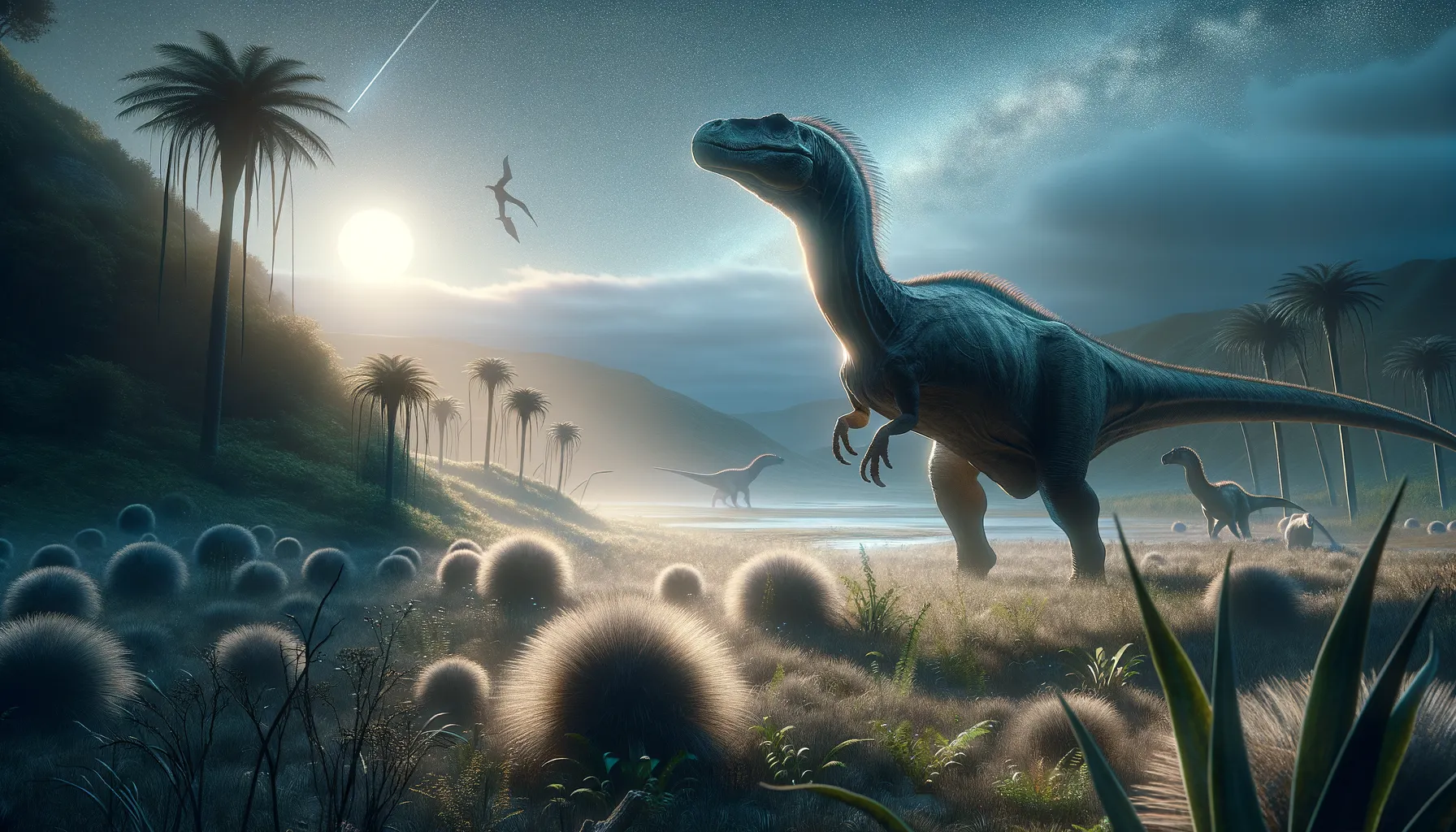
Palaeoctonus
Enigmatic predator of the ancient world
Period
Permian
Length
Precise length remains unidentified.
Height
Height specifics are unclear.
Weight
Estimated range not determined.
Palaeoctonus is considered a 'wastebasket taxon', a term used when fossils are categorized with insufficient information or clarity. Being dated from the Permian period, this creature's specifics such as characteristics and lifestyle are largely unknown in the scientific community. Discovered inadequately, it remains a mystery how it truly interacted with its environment and other species. Continued research may eventually shed some light on this enigmatic prehistoric creature.
Diet
Due to the vague classification, specific dietary habits of Palaeoctonus aren't well documented. It is presumed to have been carnivorous like many prehistoric creatures of the time.
Hunting
Given its unclear classification, details about hunting methods are unknown. If carnivorous, it likely relied on its environment to source food.
Environmental challenges
It probably faced the dynamic changes of the Permian era, a time noted for drastic climate fluctuations. Competition for resources might have been fierce among diverse creatures. Like many, it surely had to adapt to varied landscapes or risk extinction.
Speed
Unknown; specific data not available.
Lifespan
Data about lifespan is not known.
First discovery
Dubbed a 'wastebasket taxon'; little data available.
Fun Facts
- Palaeoctonus is known as an ancient dinosaur from the late Permian period, making it older than the popular Jurassic giants.
- This dinosaur's name means 'ancient killer,' suggesting it was a formidable predator in its time.
- Palaeoctonus is believed to have been a small carnivore, likely feeding on smaller reptiles and amphibians.
- Fossils of Palaeoctonus have primarily been found in what is now Russia, giving us insights into prehistoric ecosystems there.
- Despite being lesser-known, Palaeoctonus contributes to our understanding of early predator-prey dynamics in prehistoric times.
Growth and Development
With scant information available, growth patterns remain speculative at best. We surmise it followed typical development stages akin to similar Permian creatures. Fossil records don't readily clarify stages or maturation processes.
Habitat
Insights into its specific habitat are limited. However, during the Permian period, this creature might've traversed terrestrial zones amid coniferous vegetation. Swamps, arid areas, or forested landscapes might have shaped its existence.
Interaction with other species
Scant data leaves its interaction with contemporaries largely speculative. Surmised interactions, if carnivorous, may have included predation on smaller species. Camouflage or mimicry might have aided in its survival.
Natural lifespan
Lifespan specifics remain unknown.
Reproduction
Reproduction theories about the Permian creature are broad, including possibilities akin to today's reptiles. Laying of eggs might have been a mode, but direct evidence in terms of nesting or brood care is absent.
Social behaviour
With limited insights, social behavior remains broad. Some speculative potential for solitary habits, like many predators.
Fossil locations
Precise locations where fossils were retrieved are not well documented. Limited acquisition in regions yielding other Permian fossils.
